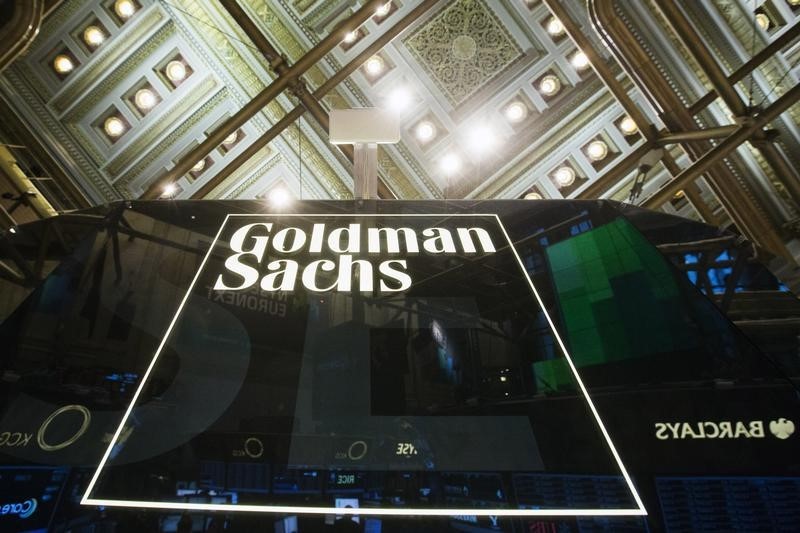(Bloomberg) -- Can large U.S. banks hand $170 billion to their shareholders in the next 12 months? Will a top European investment bank botch the first public stress test of its entire U.S. business?
The Federal Reserve will answer those questions and more when it posts results from the second and final stage of its 2018 stress test Thursday at 4:30 p.m. While investors got hints during the first stage last week, the central bank has repeatedly found ways to surprise in past reviews of banks’ risk management and proposed cash payouts.
The results -- good or bad -- will land at a tense moment for bank stocks. The S&P 500 Financials Index fell a 13th straight day on Wednesday, the longest losing streak on record. Investors are concerned that recent interest-rate trends could crimp revenue from lending or that a trade war might derail global growth.
Here are the firms that analysts and investors are watching:
Goldman, Morgan Stanley (NYSE:MS)
In the first stage of the test, leverage ratios at Goldman Sachs Group Inc (NYSE:GS). and Morgan Stanley were projected to drop close to the minimum allowed in a stressed scenario, sounding alarm bells about their ability to increase payouts to shareholders. That test examined hypothetical losses with dividends continuing as before. The second phase looks at requests for future stock buybacks and higher dividends. Both firms quickly issued statements after last week’s result to warn against reading too much into it, arguing their capacity to distribute capital may be greater than what the numbers suggested.
Still, analysts have grown more skeptical the firms can increase their payouts -- or in Goldman’s case, that it can even maintain last year’s level.
“We don’t get to see all the details of how the Fed gets to its numbers, but it’s still hard to fathom how they can meet pre-test expectations,” said Brian Kleinhanzl at Keefe, Bruyette & Woods. “The math just doesn’t work.”
The pair may have to lower their proposed payouts to pass, Kleinhanzl said. Goldman already took that so-called mulligan twice since 2013, when the option was introduced. Morgan Stanley has used it once. Others saw the statements as lobbying the Fed for leniency, which could work in the bank-friendly regulatory environment under President Donald Trump.
“In the past that basically fell on deaf ears,” said Gerard Cassidy, analyst at RBC Capital Markets. “The new guys might look at it a little differently.”
Deutsche Bank (DE:DBKGn)
Analysts aren’t confident that Deutsche Bank AG’s U.S. operations can pass a key part of the test: the qualitative review of risk controls, internal oversight and other aspects of management. The bank’s U.S. unit already was placed on a Fed list of troubled lenders because its systems were deemed insufficient.
Like other big foreign banks operating in the U.S., the German firm was required to consolidate U.S. units under an umbrella holding company subject to the tests -- with results to be made public for the first time this year. But the company’s U.S. custodian unit took part in past tests, failing twice. The reasons then were similar to what landed the whole U.S. subsidiary on the Fed’s watch list.
“It’s pretty hard to expect a positive surprise for the state of Deutsche Bank’s controls,” said Markus Riesselmann, an analyst at Independent Research in Frankfurt. “Sadly, we’re all pretty much used to bad news around Deutsche Bank, so a negative result won’t necessarily hurt their share price.”
Banks can fail the qualitative exam even with strong capital. Deutsche Bank’s custodian unit had about 29 percent capital under stress both years it failed. The full U.S. subsidiary’s capital fell to 12 percent in last week’s projections, significantly higher than the minimum 4.5 percent. The business didn’t send any dividends home last year despite exceeding capital requirements. Failing this week would prevent it from doing so once again.
Other Foreign Banks
Other newbies this year include the U.S. units of Barclays (LON:BARC) Plc, Credit Suisse (SIX:CSGN) Group AG, Royal Bank of Canada and UBS Group AG. Even though they all handily passed the quantitative portion last week, they could be tripped up in the qualitative section as they adjust to the Fed’s expectations.
“The qualitative assessment will be the tricky test,” KBW’s European analysts wrote in a note June 22. “New entrants statistically find passing a challenge.”
Even the largest U.S. banks failed in the early years of the tests for qualitative reasons as they struggled to adapt. Such incidents petered out as the banks got the hang of the exercise. Last year, most were exempted from that portion as the threshold was raised.
The Rest
State Street Corp (NYSE:STT). also came close last week to the minimum for its leverage ratio and might have to curtail plans for payouts, according to KBW’s Kleinhanzl. But the rest of the field -- 20 U.S. lenders and seven foreign banks with U.S. operations -- are all expected to get the green light. That means U.S.-based firms could boost payouts by $30 billion while arms of foreign banks send cash home.
Here’s a snapshot of the payouts analysts were estimating for some of the largest banks before last week’s results were announced:
